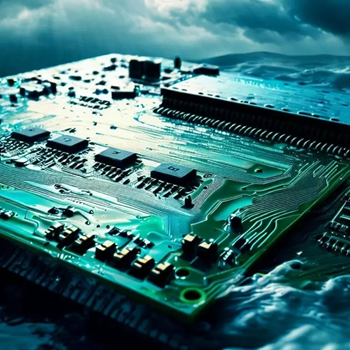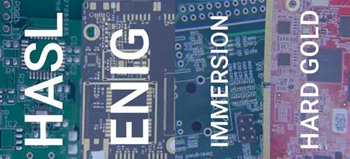PCB Connectors: From Basic to Advanced Applications
PCBs are used in all types of electronics, from mobile phones to aeroplanes. An integral part of a PCB is the connectors, which transfer information between PCBs or elsewhere in a device. For that reason, much like the entire PCB itself, PCB connectors have to be high-quality, durable and reliable. In this post, we’re going to dive into everything you need to know about PCB connectors, including the various PCB connector types, how they align and how to ensure reliability. Decoding PCB connectors: What are they? Connectors are key PCB components that provide connectivity across the PCB as well as throughout the device. They allow for data, power and signals to be transmitted seamlessly in real-time, ensuring PCBs are reliable, efficient and durable. Applications of PCB connectors include consumer electronics, medical equipment, the aerospace and defence industries, and more. Diving deep: Types of PCB connectors There are three different types of PCB connectors, with each one providing different functions within a device and having their own advantages. These include: Board-to-board connectors Board-to-board connectors are used to, as the name suggests, connect two individual PCBs in a small space. They can be connected parallel to each other or perpendicularly. They’re also useful for connecting stacked PCBs. Cable-to-cable connectors During the design or prototyping phase of PCB manufacturing, cable-to-cable connectors are sometimes used. One end of the cable is usually permanently connected through crimping, whereas the other end can be moved to form other connections. Cable-to-board connectors Cable-to-board connectors are used to connect a cable to a PCB. One end of the cable is the same as a cable-to-cable connector and the other end will have a board-to-board connector. USB PCB connectors USB connectors are used for connecting peripherals to a PCB, such as a keyboard, mouse, camera or smartphone. USBs are a universal connector that has become mainstream across all types of technology. Backplane connectors Backplane connectors are used for the transmission of data and distribute power between several PCBs. They’re often used in servers and telecommunications where there’s likely to be a need for a large amount of data. Surface-mount connectors Surface-mount connectors are soldered to the PCB itself, so they’re reliable, durable and perform well. They’re also compact so they’re useful for high-density PCBs. D-Sub connectors D-Sub connectors are D-shaped and used when there’s a need for robust connections. They’re great for use in harsh environments and are available in a range of sizes. Circular connectors Often used in the aerospace and defence industries, circular connectors are regularly used for PCBs in harsh environments. They operate consistently thanks to their resistance to vibrations, moisture and dust. FFC/FPC connectors Flexible flat cable (FFC) and flexible printed circuit (FPC) connectors connect flexible circuits to PCBs thanks to them being manipulative and lightweight. Coaxial connectors BNC, N-type and SMA are all types of coaxial connectors that are used in radio broadcasting as they maintain signal integrity and aren’t susceptible to interference. Mezzanine connectors Mezzanine connectors are used to stack PCBs, which is ideal for saving space. Orientations matter: How PCB Connectors align Due to the variety of needs, shapes and sizes of PCBs, and the conditions they operate in, PCB connectors come in different orientations. These include: • Vertical right angle connectors • Horizontal connectors • Edge-mount connectors • Surface-mount connectors • Through-hole connectors Ensuring reliability: The safety and efficiency of PCB connectors PCB connectors have a series of features to ensure safety and reliability. These include grounding to reduce the risk of an electric shock, isolation to separate individual circuits and prevent short circuits, and protection, such as guards, silicone and rubber to shield connectors and other components from environmental hazards. The choice of materials also has a big impact on safety and efficiency. Careful consideration should be made to choose connectors that are: • Dielectric so they can withstand electrical stress • Flame resistant to prevent fires • Heat resistant, so they can withstand extreme temperatures • Resistant to corrosion, especially if used in harsh environments Practical insights: Tips for how to lay out PCB connectors When it comes to building a PCB, careful consideration must be given when laying out PCB connectors. Below are some guidelines on how to lay out connectors when building a PCB: • Signal traces should be kept short to minimise any signal degradation. • For optimum cable management, plan the board to find the ideal location for components and connectors. • Group similar connectors together where possible to allow for simple serviceability, but with enough space to prevent interference and avoid short circuits. • Connectors can generate heat, so utilising heatsinking options can ensure heat is adequately dissipated. • If there are space limitations, right-angled headers help keep the profile low and help with cable management. • Parallel PCBs allow for modular designs and make expansion easier. • Grounding connections ensure safety, but also help with minimising noise. • Connectors must be accessible so they can be tested, maintained and debugged easily. Real-world applications: Where do PCB connectors make a difference? If a device uses PCBs, then they will also use PCB connectors. As we’ve already highlighted, connectors are used to connect to components, other PCBs or different areas of a device. Without connectors, the PCB couldn’t transmit any information. Everything from consumer electronics and hardware to industrial machinery and aircraft use PCB connectors. This makes them an integral part of the PCB manufacturing process, and proper utilisation can be the difference between a durable PCB and an unreliable one. Making the right choice: Tips for OEM purchasing managers If you’re a purchasing manager at an original equipment manufacturer (OEM), you’re likely to make regular decisions about the right PCB connector for the right use to ensure optimum performance, durability, reliability and longevity. Here are just a few tips to bear in mind to help you make the right choice. • There isn’t necessarily a one-size-fits-all approach to PCB connectors, so make sure you thoroughly understand the requirements of each connector. • For maximum efficiency and durability, connectors need to handle the correct level of voltage and current to avoid overheating, which can lead to performance issues. • Depending on the size and type of data being transmitted, connectors need to maintain signal integrity. • If connectors are frequently plugged and unplugged, they should have a high number of mating cycles to ensure durability. • If PCBs are in a device that might vibrate or move that could cause connectors to detach, you’ll need to choose connectors with locking mechanisms. • For PCBs used in harsh environments, connectors have to cope with extremes of temperature, dust, moisture, vibrations, chemicals and radiation. Material compatibility and protection are crucial. Conclusion: The future of PCB connectors in the electronics industry PCB connectors are one of the most important aspects of PCB design and manufacturing. Without them, a PCB would be nothing more than a glorified paperweight. Here at ABL Circuits, we offer comprehensive PCB and manufacturing solutions for OEMs, and understand the importance of the right connector being used for the right application. Get a free trial today and enhance your product with ABL Circuits.Visit the ABL Circuits Ltd website for more information on PCB Connectors: From Basic to Advanced Applications





